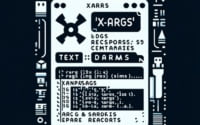Kubernetes Troubleshooting Guide | Fix Kubernetes Issues Fast
Imagine deploying your latest application on Kubernetes. You’ve carefully examined your configurations, and all seems in order. You initiate the ‘deploy’ command, and suddenly, things go haywire. You’re bombarded with a plethora of error messages and logs. It’s like you’ve inadvertently unleashed a Pandora’s box of Kubernetes issues. Sounds intimidating, right? But don’t fret, that’s why this guide exists.
Kubernetes, an incredibly potent tool for managing and deploying containerized applications, can sometimes feel like an intricate maze. Its detailed architecture and the multitude of components that constitute it can make troubleshooting a challenging task. But by the end of this blog post, you’ll be proficient in navigating this labyrinth.
Whether you’re a seasoned developer or a Kubernetes novice, this guide will make the troubleshooting process less intimidating. So, let’s dive in and start decoding the complexities of Kubernetes troubleshooting.
TL;DR: What is Kubernetes troubleshooting?
Kubernetes troubleshooting is the process of identifying, investigating, and resolving issues within a Kubernetes cluster. It involves understanding the intricate interactions within the cluster’s architecture and using specific tools to navigate and resolve issues. For a deeper understanding and more advanced methods, continue reading the article.
For more information on all things Kubernetes, Docker, and containerization, check out our Ultimate Kubernetes Tutorial.
Table of Contents
Kubernetes Troubleshooting Primer
Let’s start by defining ‘Kubernetes troubleshooting’. Essentially, it is the process of identifying, investigating, and resolving issues within a Kubernetes cluster. It sounds simple, but the intricacies lie in the details.
Kubernetes troubleshooting presents various challenges. The primary one is the system’s complexity. Kubernetes operates like a well-oiled machine with numerous moving parts. Managing these components can be overwhelming, especially when dealing with errors in a distributed environment.
However, there are tools to help navigate these challenges. For example, consider this command:
kubectl get events --sort-by=.metadata.creationTimestamp -A
This is an invaluable tool for troubleshooting. It outputs events in the default namespace, providing a clear snapshot of your cluster’s activities.
Beyond the technical aspects, the human element plays a crucial role in troubleshooting. Administrators, who manage the cluster, handle deployments, and resolve issues, are integral to the process.
Chances are if you’re troubleshooting Kubernetes issues, you’ll also end up working with Docker. For Docker troubleshooting tips, see our article Docker Troubleshooting.
Systematic Diagnosing of Kubernetes Issues
Let’s think of ourselves as detectives trying to solve a mystery. We wouldn’t hastily jump to conclusions without thoroughly gathering all the facts, would we? When diagnosing Kubernetes issues, a systematic approach is crucial. Understanding the issue in-depth, identifying the root cause, and effectively resolving it is the way to go.
Here is a summary of the systematic approach to diagnosing issues:
| Step | Description |
|---|---|
| 1 | Start with the smallest units of your cluster, the Pods |
| 2 | Move up to the Services |
| 3 | Finally, look at the Ingress |
We recommend a bottom-up approach. This means initiating from the smallest units of your cluster, the Pods, and gradually working your way up through the Services, and finally to the Ingress. It’s akin to constructing a house, where you begin with the foundation and gradually build up.
This systematic approach can be transformative in understanding and resolving Kubernetes issues. It ensures that no aspect of the problem is overlooked, and every detail is scrutinized. It’s comparable to peeling an onion, layer by layer, until you reach the core of the issue.
Dive into Kubernetes Troubleshooting
With a basic understanding. Here is an example of the output of the kubectl top pod and kubectl top node commands:
kubectl top pod
POD NAME CPU(cores) MEMORY(bytes)
pod-1 123m 456Mi
pod-2 789m 1011Mi
kubectl top node
NODE NAME CPU(cores) MEMORY(bytes)
node-1 123m 456Mi
node-2 789m 1011Mi
Commands like kubectl top pod and kubectl top node are invaluable tools. They offer insights into CPU and RAM usage by pods and nodes, respectively, helping you understand resource allocation, a critical factor in troubleshooting.
Common Kubernetes Errors
Like any complex system, Kubernetes isn’t exempt from errors. Understanding these errors is the first step towards resolution.
Here is a summary of common errors, their causes, and potential solutions:
| Error | Cause | Solution |
|---|---|---|
| CrashLoopBackOff | Container can’t start | Inspect logs |
| ImagePullBackOff | Unable to pull the container image | Verify image details |
| Exit Code 1 | Container started but crashed immediately | Review application logs |
| Exit Code 125 | Docker failed to run the container | Run the image locally |
| Kubernetes Node Not Ready | Kubelet on the node isn’t functioning correctly | Check the kubelet logs |
Let’s explore some of the most frequent Kubernetes errors and their fixes.
CrashLoopBackOff
This error usually occurs when a container can’t start, and Kubernetes continuously tries to restart it. Causes range from misconfigurations to failed application starts. The ideal way to diagnose this error is to inspect the logs using the kubectl logs command.
kubectl logs [pod-name]
ImagePullBackOff
This error indicates that Kubernetes is unable to pull the container image. It could be due to an incorrect image name, tag, or private registry credentials. Verify your image details and try again.
This can be diagnosed with the following command:
kubectl describe pod [pod-name]
Exit Code 1
This error signifies that the container started but crashed immediately. It’s typically due to an issue within the container, such as an error in your application code. Review your application logs to pinpoint the error.
This can be diagnosed with the following command:
kubectl logs [pod-name]
Exit Code 125
This error suggests that Docker failed to run the container. It could be a Docker issue or a problem with the container image. Try running the image locally on your machine to see if the problem persists.
This can be diagnosed with the following command:
docker run [image-name]
Kubernetes Node Not Ready
This error means that the kubelet on the node isn’t functioning correctly. It could be due to insufficient resources, network issues, or the kubelet service not running. Check the kubelet logs on the node for more details.
This can be diagnosed with the following command:
journalctl -u kubelet
Understanding errors
Recognizing each error is just the start. You also need to comprehend the implications of these errors on your Kubernetes cluster. For instance, a CrashLoopBackOff error could render your application unavailable, while an Exit Code 125 error could signal a deeper issue with your Docker setup.
Fortunately, Kubernetes has a rollback feature that can be used for quick recovery from faulty deployments. This can minimize disruption and save valuable troubleshooting time.
Kubernetes Troubleshooting with Lumigo
We’ve discussed. the complexities and common errors of Kubernetes troubleshooting. But what if there was a tool that could simplify this process? Enter Lumigo.
Here is a summary of Lumigo’s features and their benefits:
| Feature | Benefit |
|---|---|
| Enhanced visibility | Identify and resolve issues more effectively |
| Automated error tracking | Ensure no error goes unnoticed |
| Comprehensive performance insights | Detect potential bottlenecks or performance issues |
| Automated communication system | Respond swiftly and minimize downtime |
Lumigo, a robust platform designed specifically for Kubernetes troubleshooting, acts as your personal assistant, always ready to help you navigate the complexities of your Kubernetes environment. Although primarily a paid service, Lumigo does offer a robust free otpion, so can be a good choice even for personal projects.
One of Lumigo’s primary benefits is its ability to enhance visibility. Imagine having a high-powered microscope that lets you see every detail of your Kubernetes cluster. This increased visibility is vital in troubleshooting as it enables you to identify and resolve issues more effectively.
Lumigo also offers automated error tracking. It continually monitors your environment and automatically flags any occurring errors. It’s akin to having a vigilant watchdog, ensuring that no error goes unnoticed.
Moreover, Lumigo provides comprehensive performance insights. It enables real-time monitoring of your cluster’s performance, helping you detect any potential bottlenecks or performance issues. Think of it as a personal trainer for your Kubernetes cluster, ensuring it remains in peak condition.
From automated error tracking and performance monitoring to visual debugging, Lumigo is an essential tool for anyone dealing with Kubernetes troubleshooting. If you’re looking to elevate your troubleshooting skills, Lumigo might be the perfect fit for you.
Conclusion
Remember, troubleshooting isn’t merely about rectifying problems; it’s about comprehending them. It’s akin to peeling an onion, layer by layer, until you uncover the root cause. Once that’s achieved, you’re already halfway to the solution.
We’ve traversed the labyrinth of Kubernetes troubleshooting together, and hopefully, it seems a little less intimidating now. We’ve examined potential challenges, delved into the intricate details of the process, and explored common errors you might encounter. More importantly, we’ve navigated these obstacles and discovered solutions.
We’ve also introduced Lumigo, a potent tool that can significantly bolster your troubleshooting efforts. With its advanced features like automated error tracking and performance monitoring, Lumigo can be a formidable ally on your Kubernetes journey.
The next time you’re confronted with a Kubernetes issue, don’t panic. Take a deep breath, roll up your sleeves, and dive in. Ultimately, remember that troubleshooting is an art. It demands patience, curiosity, and a systematic approach. But with these tools at your disposal, you’re well-equipped to master this art.


